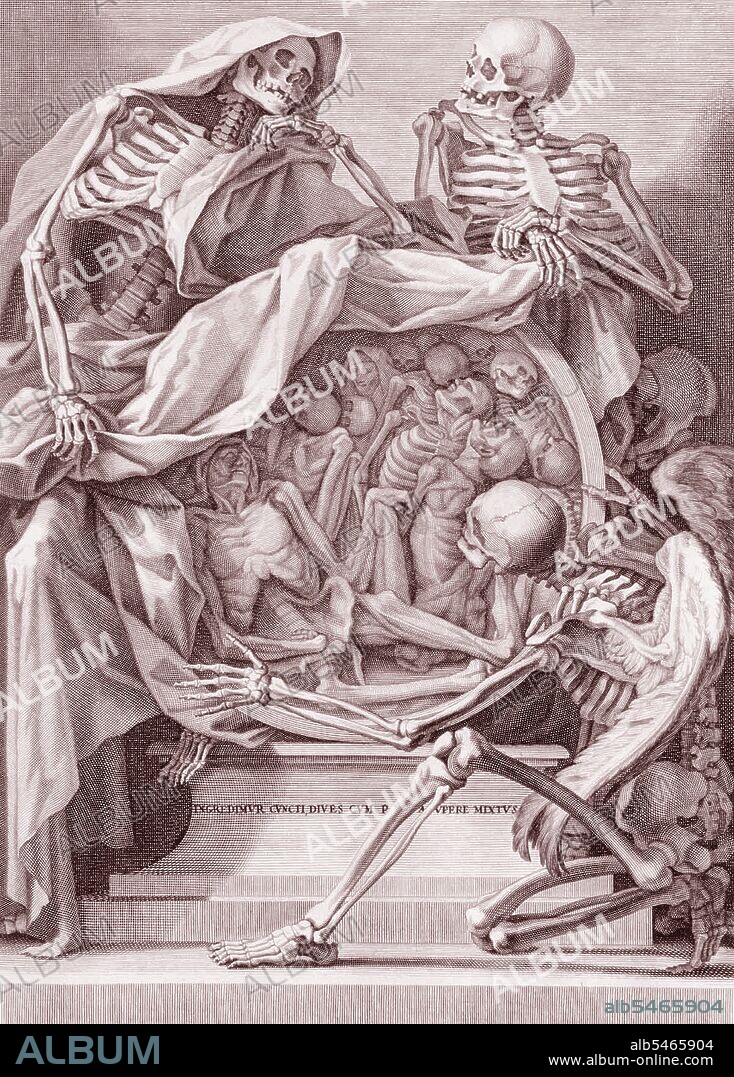alb5465904
Italy: Frontispiece of Bernardino Genga's 'Anatomia per Uso et Intelligenza del Disegno' (Rome: Domenico de' Rossi,1691).

|
Zu einem anderen Lightbox hinzufügen |
|
Zu einem anderen Lightbox hinzufügen |



Haben Sie bereits ein Konto? Anmelden
Sie haben kein Konto? Registrieren
Dieses Bild kaufen.
Nutzung auswählen:

Titel:
Italy: Frontispiece of Bernardino Genga's 'Anatomia per Uso et Intelligenza del Disegno' (Rome: Domenico de' Rossi,1691).
Untertitel:
Siehe automatische Übersetzung
Bernardino Genga (1620–1690) was a scholar of Classical medical texts, editing several works of Hippocrates. He also had a great interest in the preparation of anatomical specimens as well as the anatomy of ancient Greek and Roman sculpture. These interests led to his work at the French Academy in Rome, where he taught anatomy to artists. 'Anatomia per Uso et Intelligenza del Disegno' consists of 59 copperplate engravings of text and illustrations printed on one side only. After the engraved title is a plate with allegorical emblems of death. Of the illustrated plates, the first 23 deal with osteology and myology drawn from Genga's anatomical preparations. The remainder consists of representations of antique statues viewed from different angles. An English translation of the work appeared in London in 1723 under the title: 'Anatomy Improved'.
Bildnachweis:
Album / Pictures From History/Universal Images Group
Freigaben (Releases):
Model: Nein - Eigentum: Nein
Rechtefragen?
Rechtefragen?
Bildgröße:
3550 x 4952 px | 50.3 MB
Druckgröße:
30.1 x 41.9 cm | 11.8 x 16.5 in (300 dpi)
Schlüsselwörter:
ANATOMIE • GEMAELDE • GESCHICHTE • ITALIEN • ITALIENER • ITALIENISCH • KNOCHENMANN • KUNST • MALEREI • MEMENTO MORI • SKELETON • SKELETT • TECHNIK: ZEICHNUNG • WISSENSCHAFT • WISSENSCHAFTEN • ZEICHNEN • ZEICHNUNG • ZEITGESCHICHTE
 Pinterest
Pinterest Twitter
Twitter Facebook
Facebook Link kopieren
Link kopieren Email
Email
